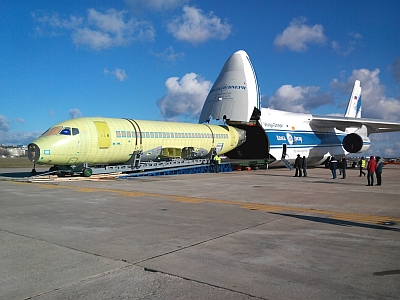
WorldACD reports that after a volume growth of 1.8% year-on-year (YoY) in July, we witnessed a slightly higher figure for August: +2.3%. Taken together with the volume growth in June (+3%), one could say that the (Northern Hemisphere) summer has been almost as mild to the industry as the September weather in Europe. While these figures still fail to impress, they are certainly better than those for the earlier months of the year. And with so many economies still stuttering, could one realistically hope for much higher growth?
In another confirmation of recent trends, the worldwide USD-yield remained stable – actually, it was 0.5% higher in August than in July. Once again, the origins Africa and Central & South America did not contribute to the overall volume growth, but they managed to keep their yields much closer to last year’s levels than the other regions did. The same was noticeable on some of the larger O&D’s, in particular Japan to USA Midwest, Germany to the USA and Kenya to the Netherlands. Volume growth YoY was rather evenly spread over the various product categories, the only exception being pharmaceuticals, which grew by about 10%.
Readers following the monthly reports of both IATA and WorldACD will have wondered how the growth figures reported for July could have been so different from one another: 5% vs. 1.8%. True, IATA reports in FTK (Freight Tonne Kilometers) and WorldACD in kilograms, but could that lead to such a big difference in growth? Could the variation in outcome be caused by the fact that WorldACD and IATA rely on different ‘carrier populations’ for the inputs into their systems, even though a very large part of the two populations actually overlap? Could it be that longer-haul business had suddenly made relatively big strides?
We ourselves were intrigued as well, so we took a closer look at the subject.
Reporting in kilograms is the better indicator for knowing the amount of freight being transported by air, on an aggregate level, but also per individual market (O&D). FTK, on the other hand, are the better indicator for knowing the resultant of weight carried and distance flown. However, changes in FTK are in themselves a combination of two elements: changes in volumes per O&D, but also changes in operational patterns. After all, it makes a difference in FTK whether a carrier serves a market directly, i.e. via the shortest possible route, or indirectly, e.g. via its hub. Thus, an increase in FTK could be (partly) caused just by more indirect carriers entering a given market.
In other words, neither FTK’s nor kg-data, nor the combination of the two, provide a clear answer to the question to what extent an aggregated number of individual markets may have experienced a shift from long(er) haul to short(er) haul. To find that answer, we have built an additional measure, which we will call DTK (Direct Tonne Kilometres). The DTK-measure combines kilograms with the shortest distance between an O&D. Thus, it provides the information we look for, i.e. to what extent markets are shifting from short haul to long(er) haul or v.v.
Now back to the July data from IATA and WorldACD. DTK in July indeed showed a much higher YoY growth (+3.4%) than the kilogram figures did (+1.8%). These figures combined tell us two things. They lend credibility to the fact that the July-data provided by IATA and WorldACD were quite divergent. But they also tell us the exact size of the shift towards long(er) distance markets: of the total DTK-growth of 3.4%, only 1.8% was due to weight growth, so 1.6% was caused by the change in O&D’s reported. WorldACD intends to work further on this subject in order to provide you with more detailed insights into market changes.
By the way, YoY DTK-growth and volume growth were much more aligned in August.